MARIANI’SVirtual Gourmet
November 6, 2011
NEWSLETTER
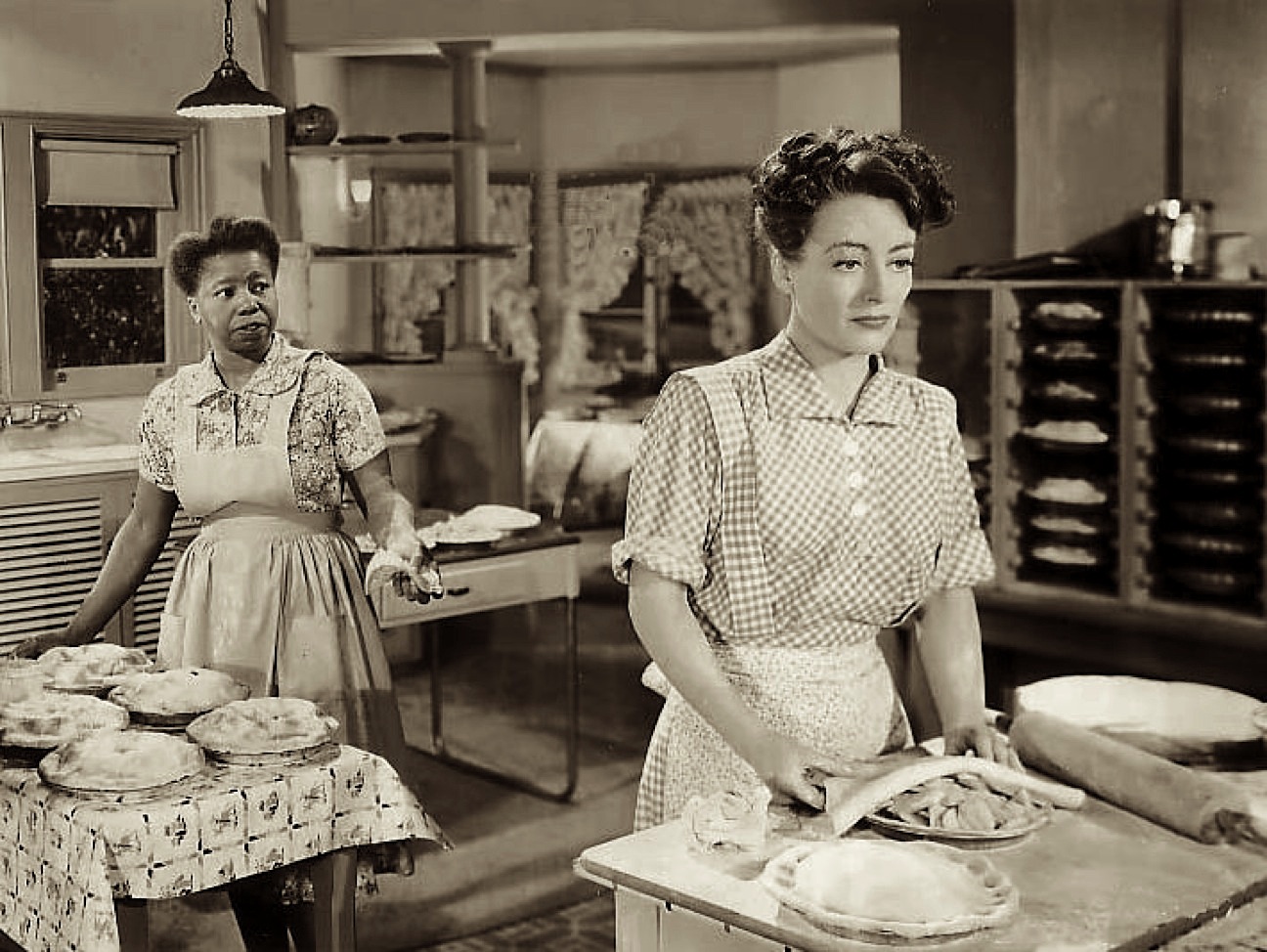
THIS WEEK
HARRY'S
BAR...THE ONE AND ONLY
by John Mariani
NEW YORK CORNER: LA MANGEOIRE
by John Mariani
MAN ABOUT TOWN: TXOKO, SAN
FRANCISCO
by Chris Mariani
TRAPPIST
MONKS, BARLEYED BLONDES, AND BUFFALO
BILL ADD SPICE TO BELGIUM BEERS
by John Mariani
HARRY'S
BAR. . . THE ONE AND ONLY
by John Mariani
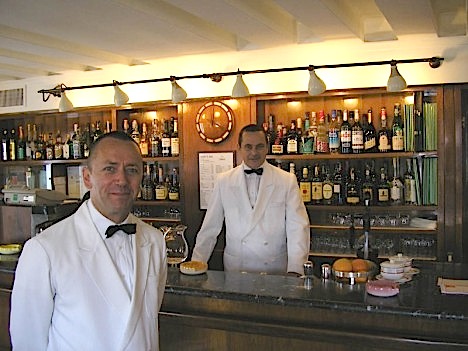
“Then he
was pulling open the door of Harry’s bar
and was inside and he had made it again, and was
at home.”
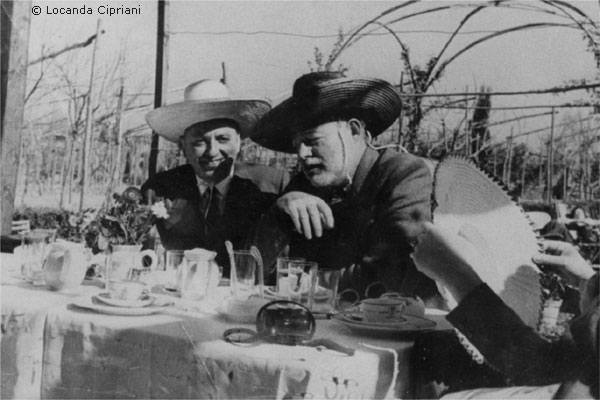 So begins a chapter
in Ernest Hemingway’s 1950 novel, Across the
River and Into the Trees. He even went
on to put the bar’s proprietor, Giuseppe
Cipriani, into the novel as Giuseppe
Cipriani—the only time a living person
appeared in any of Hemingway’s fiction. Now
this former bartender from Verona is part of
literary history and Harry’s is perhaps the
most famous bar in the world, as well as one
of the best—and most expensive-- restaurants
in Venice.
So begins a chapter
in Ernest Hemingway’s 1950 novel, Across the
River and Into the Trees. He even went
on to put the bar’s proprietor, Giuseppe
Cipriani, into the novel as Giuseppe
Cipriani—the only time a living person
appeared in any of Hemingway’s fiction. Now
this former bartender from Verona is part of
literary history and Harry’s is perhaps the
most famous bar in the world, as well as one
of the best—and most expensive-- restaurants
in Venice.Giuseppe Cipriani and Ernest Hemingway
The first
time I went to Harry’s many years ago it was
because of the benediction and cachet Hemingway had
given the place, and it lived up to all
starry-eyed expectations. Set
right on the Grand Canal, its frosted glass door
opening immediately onto the short mahogany bar
and pale yellow downstairs dining room, Harry’s
was full of people speaking several different
languages, sitting at low tables between which
white-coated waiters could barely maneuver,
bringing trays of bellinis and plates of
carpaccio.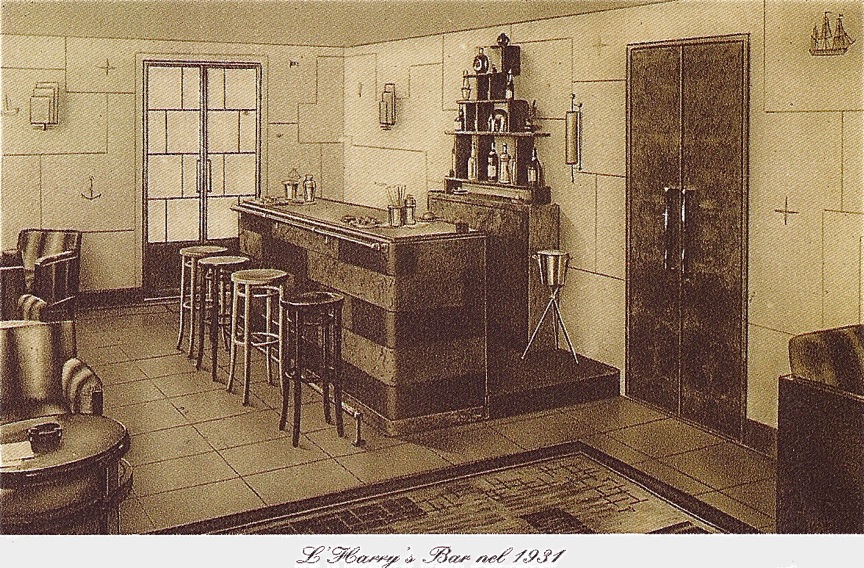
It was at Harry’s that the bellini was
born—a cocktail of prosecco and white peach juice,
named after the Venetian artist, just as the
sliced raw beef with mayonnaise invented here was
named after Carpaccio. Before the war Harry’s
regular patrons included Somerset
Maugham, Noël Coward, Charlie Chaplin, Arturo
Toscanini, and Sinclair Lewis. On a single day in
1934 the guests included the crown heads of Spain,
Denmark, Norway, and Greece, none knowing the
others were in town. Before Harry’s opened,
aristocrats never
dined at public restaurants, only at their
hotels or clubs. But the appeal of Harry’s was
irresistibile, even to them.
On that first afternoon I visited, the jet
setters were in full array, with Italian models
standing like beautiful animals at the bar,
Englishmen in impeccably tailored tweeds and more
than a few Americans laughing loudly. Strangely
enough, despite Harry’s reputation for
exclusivity, I felt as warmly welcomed as anyone
and was served with the same headlong dispatch. As soon
as I sat down, I knew I wanted to come back
whenever I would be in Venice.
Like so many things that happen
in saloons, Harry’s Bar was a buy back. During
Prohibition in the U.S., wealthy Americans went
abroad to tour, finding sanctuary in Europe as a civilized oasis
where they could drink freely. Still, Europe was
seriously deficient in the kind of casual bars
back home where one could drop in, meet friends,
and have a little something to eat. The hotel lounges were all posh, even
swank, not true “American
bars.” It was into such a hotel bar in Venice, the
Europa-Brittania Hotel, that a young Bostonion
named Harry Pickering came with frequency over a
two-month period in 1929. His original
intention was to travel with his aunt and her
gigolo and to dry out in Italy, but Pickering
insulted them so that they left him behind,
lira-less in Venice.
Turning to the one man he thought might be
his only friend in the world—Giuseppe Cipriani,
the hotel’s bartender, Pickering asked to borrow
just enough money to pay his hotel bill and go
home, about 10,000 lire. For some reason Cipriani
took pity on the young American and gave him the
money,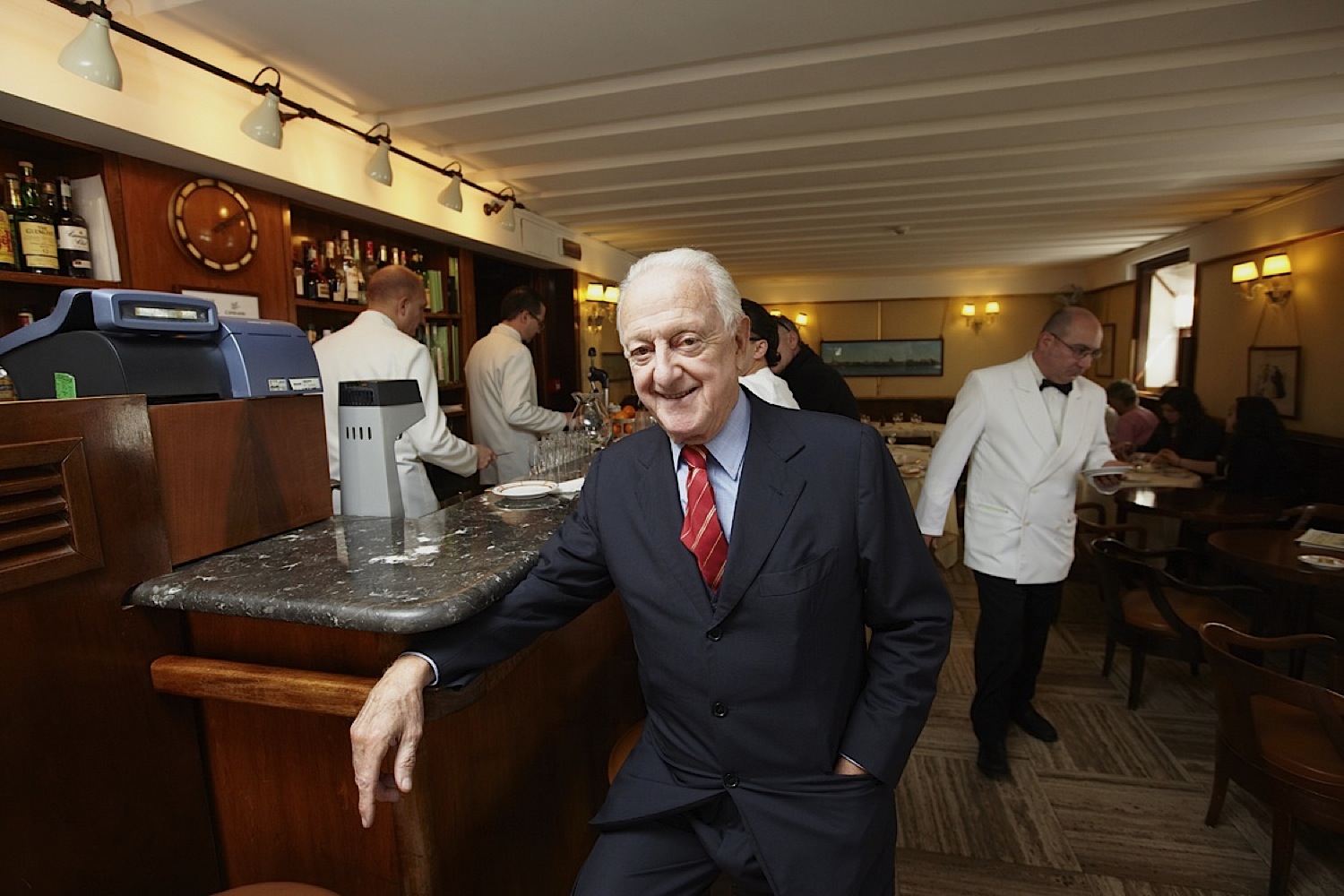 assuming he would never
see it, or Pickering, again. Two
years passed, without a word, not even a postcard
of thanks. Yet true to his promise, Pickering
eventually did return to Venice and handed
Cipriani 10,000 lire plus an additional 40,000,
with which the two of them could open a small
American-style saloon be called Harry’s Bar.
assuming he would never
see it, or Pickering, again. Two
years passed, without a word, not even a postcard
of thanks. Yet true to his promise, Pickering
eventually did return to Venice and handed
Cipriani 10,000 lire plus an additional 40,000,
with which the two of them could open a small
American-style saloon be called Harry’s Bar.
It debuted on May 13, 1931,
just off the Grand Canal, and years later Cipriani
would joke, “If all those who said they were at
Harry’s for the opening had really been there,
this place would have t be the size of the Piazza
San Marco.”
It was, as Hemingway once wrote
of a fictitious café, “a clean well-lighted
place,” with a short, cramped bar, squat
tables and low chairs, and no real view of the
Grand Canal. Cipriani hated dark bars because he
believed that “darkness hides things and people
talk in a low voice.”
The menu grew a little year by year---first
some ham and cheese sandwiches, even hamurgers,
then some pastas and Venetian dishes like risotto con
seppie. Once asked to describe the food at
Harry’s Bar, American food writer James Beard,
replied, “Well, he doesn’t serve Italian food; he
serves Cipriani food.” Nevertheless, Harry’s Bar
eventually garnered two Michelin stars, at a time
when there were no three star restaurants in
Italy.
Pickering
himself lost all interest in the venture and
returned home. (He died in 1948, leaving it all in
Cipriani’s hand in 1948.) When
the war came to Venice, Cipriani’s clientele were
prevented from going to their favorite watering
hole. Then,
one day in 1943 a group of Fascists entered
the bar and told Cipriani he had to put up a sign
reading, “We do not want Jews in this establishment.” When
the thugs returned a few days later and demanded
to see the sign, Cipriani led him to the kitchen,
where it was displayed onthe kitchen door, causing
the infuriated Fascists to tear the place up with
their bayonets. A few days later the German consul
insisted that Cipriani’s establishment was a
hangout for “unacceptable non-Aryans. ”
Rather than accede to coercion,
Cipriani closed the doors, sailed the Grand Canal
and went hunting on the isle of Torcello until the
war ended. Harry’s Bar was turned into a German
soldiers’ mess hall. Then, a few weeks
after the liberation of Venice in April 1945,
Cipriani was summoned by the U.S. commander of the
Allied forces. "You are not a good Italian,"
he told Cipriani sternly. "Why?" he asked.
"Because you have not re-opened Harry's Bar." As
Cipriani tells it, “For probably the first time in
my life, I did not feel inclined to quibble with
the authorities.”
After the war—Hemingway
started coming in 1949—the little tables at
Harry’s were day and night filled with
international jet setters and show business stars,
not least Orson Welles, whose bellowing voice
could be heard coming all the way down the Calle
Vallarosso to the famous etched glass doors of the
restaurant.
Georges Braque, Henry Fonda, Aristotle
Onassis, Truman Capote,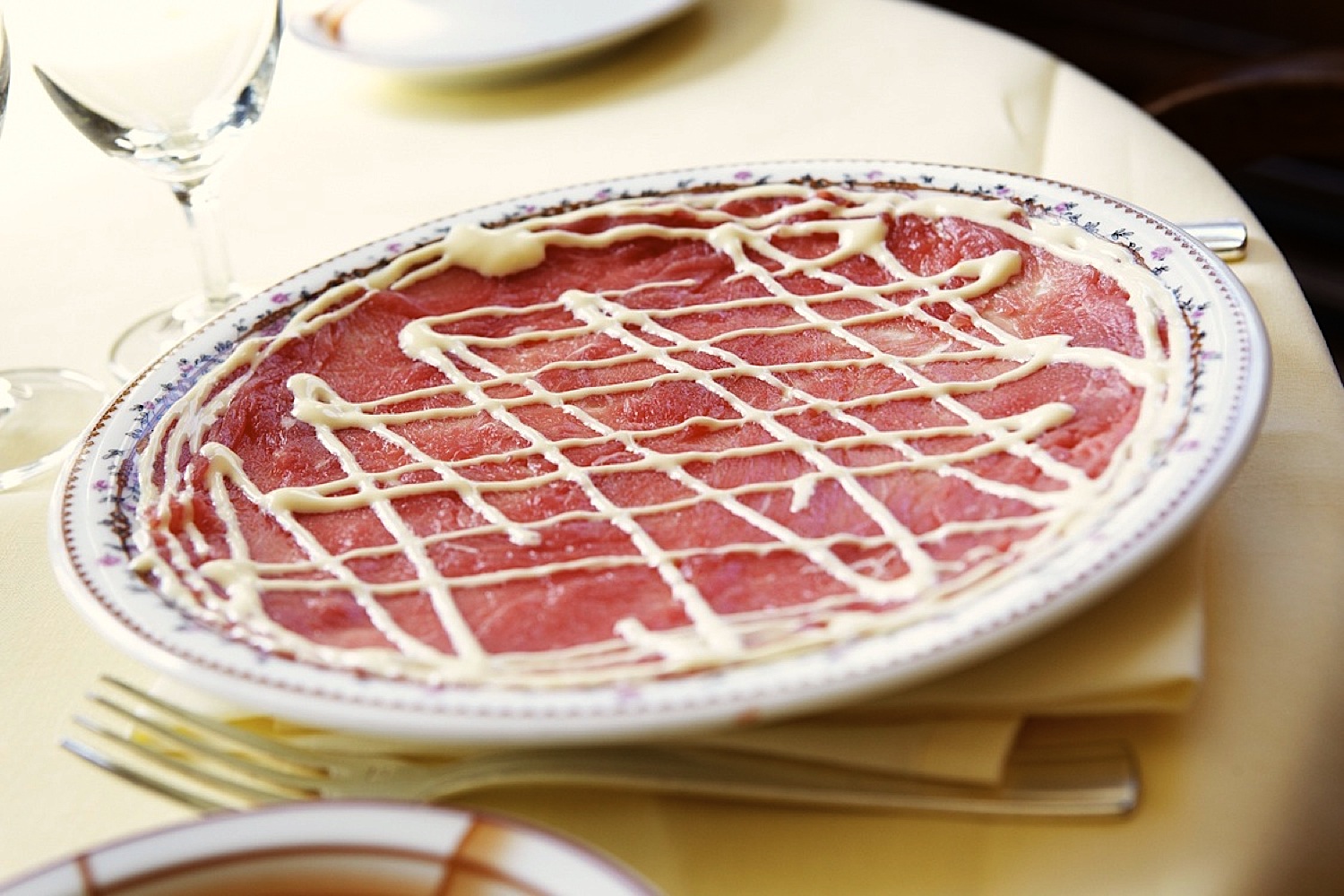 Rita Hayworth, Peggy Guggenheim,
Woody Allen—all were patrons. Although unlike any
other bar-restaurant in Italy but never a true
club, it still seems that everybody knows
everybody else at Harry’s.
Rita Hayworth, Peggy Guggenheim,
Woody Allen—all were patrons. Although unlike any
other bar-restaurant in Italy but never a true
club, it still seems that everybody knows
everybody else at Harry’s.
Given the bar’s popularity,
prices rose and rose, so that today the carpaccio
(right)
costs 47 euros, risotto alla
primavera 36, and filet of sole alla Casanova
53. And those
bellinis that everyone drinks down in three
sips are 15.
Now in its ninth decade, run
for many years by Cipriani’s son Arrigo (Giuseppe
died in 1980), Harry’s Bar was declared a
National Landmark in 2001, so, even if the
Ciprianis wanted to move, they are prohibited from
doing so. They are not even allowed to change the
furniture or décor.
I met Arrigo that first time I
ate at Harry’s and found him the consummate
Venetian gentleman, hospitable to all, friendly
but never intmate with some, always aware that he
embodies the true spirit of the place, always
seeming to be the same while quietly refining his
ministry to a world uncomfortable with change.
Arrigo has aged with remarkable
grace, now with less hair and a slight paunch, but
his double-breasted suits are well tailored and
always buttoned and his bright, artfully knotted
ties always deliberately askew, because, he says,
“Perfection is boring.” He never sits down with
clients or accepts invitations to dine at their
homes and he always seems enormously grateful that
each has chosen to dine at his little bar. “I’m still
here five days a week, and my daughter Carmela is
here on weekends,” Cipriani told me on my latest
visit. “That’s why my new book is called Prigioniero
di Una Stanza a Venezia (prisoner of a room
in Venice). I have my meals there and pretend to
be working hard. I think that after 60 years I
begin to understand something about restaurants. A
restaurant is not only food, not only service; it
is a combination of thousand of details that
drives to the final target of freedom. The secret
is: `No imposition.’ A customer should feel free
to order as he wishes and to be himself, not obey
the restaurateur’s rules.”
Photo: Dave
Yoder
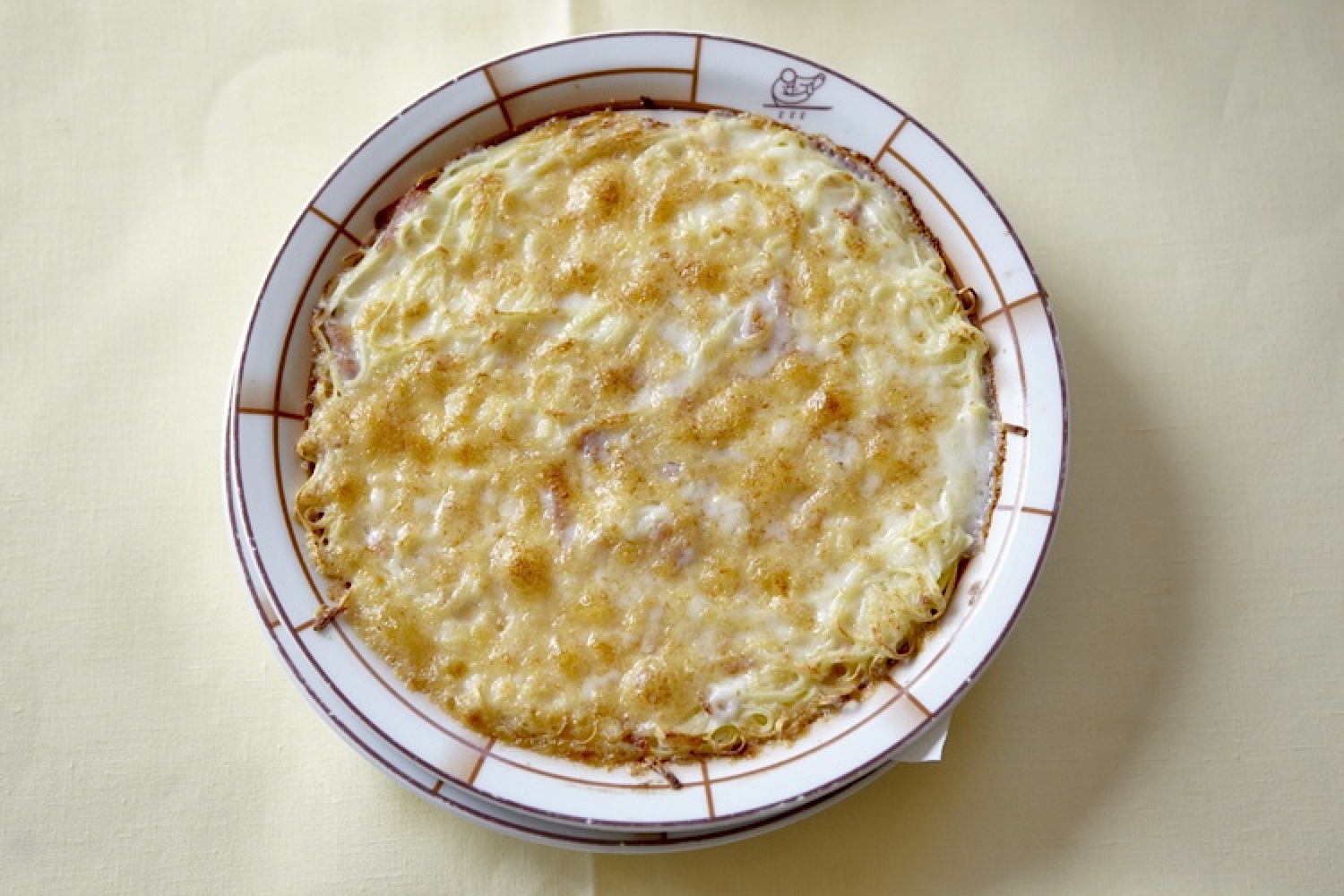 One of those
thousand details explains his psychology: When I
asked him why he continues to use such small,
trattoria-size wine glasses instead of big bowl
Riedel, Cipriani shrugged: “Imposition number one!
If I pour the wine into one of those big glasses,
you are practically forced to take it in your hand
and smell the wine. You don’t want to feel stupid
in front of an important sommelier! Imposition
number two! Drinking from a big glass requires an
uncomfortable movement of your arm. A century ago
glasses were small and the wine was the same as
now. If the wine is bad, it will be so even in a
big glass. Breathing? Come on! You can open the
bottle ten minutes before serving the wine. Big
glasses are a busines, a joint venture between
restaurant guide books and the glass factories.”
So, too, while there are a hundred wines on
Harry’s list, the expensive bottles are never
promoted, and clients who could afford anything
drink the carafe house wines that cost only 12 to
20 euros.
One of those
thousand details explains his psychology: When I
asked him why he continues to use such small,
trattoria-size wine glasses instead of big bowl
Riedel, Cipriani shrugged: “Imposition number one!
If I pour the wine into one of those big glasses,
you are practically forced to take it in your hand
and smell the wine. You don’t want to feel stupid
in front of an important sommelier! Imposition
number two! Drinking from a big glass requires an
uncomfortable movement of your arm. A century ago
glasses were small and the wine was the same as
now. If the wine is bad, it will be so even in a
big glass. Breathing? Come on! You can open the
bottle ten minutes before serving the wine. Big
glasses are a busines, a joint venture between
restaurant guide books and the glass factories.”
So, too, while there are a hundred wines on
Harry’s list, the expensive bottles are never
promoted, and clients who could afford anything
drink the carafe house wines that cost only 12 to
20 euros.
Arrigo’s views on Harry’s food
is much the same. “The menu is larger now,” he
says, “but the food is as usual, traditional
Italian, from the housewives, not from the great
French chefs. In all our restaurants we make our
own bread, breadsticks, pasta, meringue cakes (below) and
ice-cream. We have more than 100 cooks around the
world. No one is a protagonist, you will not know
the name of anyone, but they are wonderful, and
more than anything they cook the way we want. They
can all reproduce our taste, which by now belongs
to the DNA of our customers.”
It is certainly true that
Harry’s food reads like simple—if very
expensive!--home cooking, most of it drawn from
Adriatic waters for dishes like the scampi
and octopus salad, the cuttlefish with white
polenta, and the grilled fish of the day. But
there are also wonderful meat dishes, many
refined—but not too
much—over decades, like the tripe alla
veneziana with rice pilaf, the calf’s liver
with onions, veal piccata
with lemon sauce, and chicken curry, not to
mention the irresistible cheese-and-ham grilled
cheese sandwiches with a touch of dry mustard and
Worchestershire sauce that have been on the menu
almost since the beginning.
And then there are the
pastas—very rich pastas, like risotto with sausage
and radicchio, pappardelle
with saffron and bacon, and the extraordinary,
luscious tagliolini gratinata (above), baked with cream and cheese
beneath a golden brown crust. These dishes 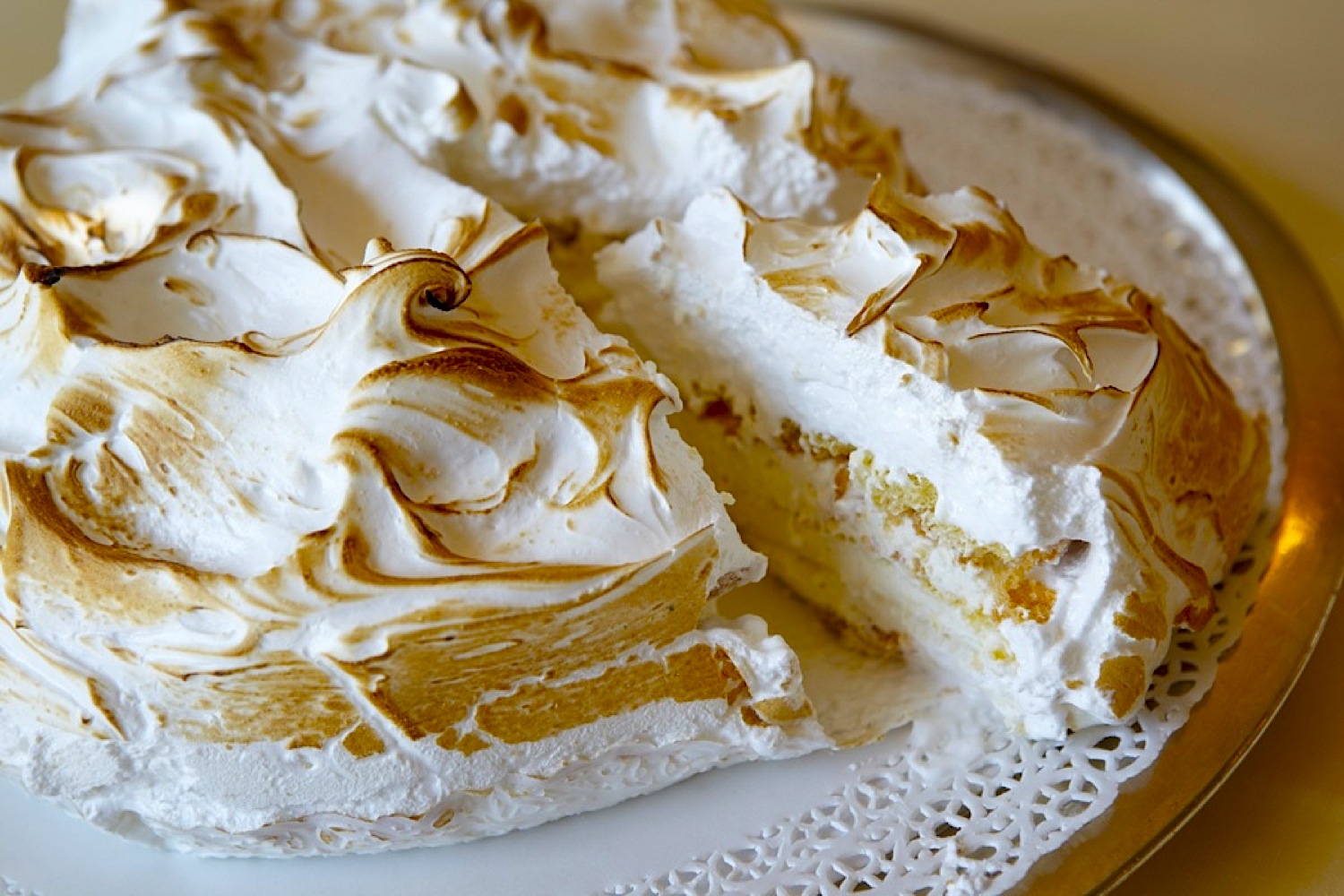 have always tasted exactly the same
to me, served on the same plates, the wine poured
into the same glasses from the same carafes. Which
makes it difficult for me to try something new at
Harry’s just as it is for Harry’s to attmept any
changes in the menu.
have always tasted exactly the same
to me, served on the same plates, the wine poured
into the same glasses from the same carafes. Which
makes it difficult for me to try something new at
Harry’s just as it is for Harry’s to attmept any
changes in the menu.
Most of the dishes date back
decades; neither has there been much change in
Harry’s staff, from the bartenders who can make a
cocktail in half the time it would take an
American colleague, to the captains and waiters,
who have come to know a vast majority of the
regular clientele, which has become part and
parcel of Harry’s ambiance and spirit.
Photo:
Dave Yoder
Still, the 21st
century has seeped into the two dining rooms at
Harry’s, where I now find suits
and ties are now rarely seen and rock musicians
stand at the bar in leather jackets and ripped
jeans. Cipriani seems guardedly philosophical
about this, having seen a parade of fads and
fashions come through those famous doors over his
60 year tenure. “The changes mainly concern the
casual style of the fashion more than the people
themselves, and it has been going on for a long
time,” he says. “The Prince of Wales said that the
decline of Savile Row started from Bermuda. But
there really is no gap between the old generation
and the new one. Luxury is still the engine of
everybody’s life. The question is, what exactly is
luxury today? Is it based on décor or on
people? On the form or on the substance?”
As someone who drives “the
fastest car in Europe”—the 530 hp AMG 6.3
Mercedes—Cipriani can readily speak about engines
of luxury, but even he has had to adapt. Sighing,
he says, “Sometimes, in order to keep my driving
license, I have to slow down in front of the
police. Sometimes.”
After 80 years in business,
Harry’s Bar hardly seems a business—though it
makes plenty of money for the Ciprianis. Instead,
it works as a beacon along the Grand Canal, whose
blue awnings you see from the vaporetto, whose
glass-and-wood door is a refuge and, for many like
Hemingway, has become a true home away from home.
❖❖❖
NEW
YORK CORNER
by
John Mariani
La
Mangeoire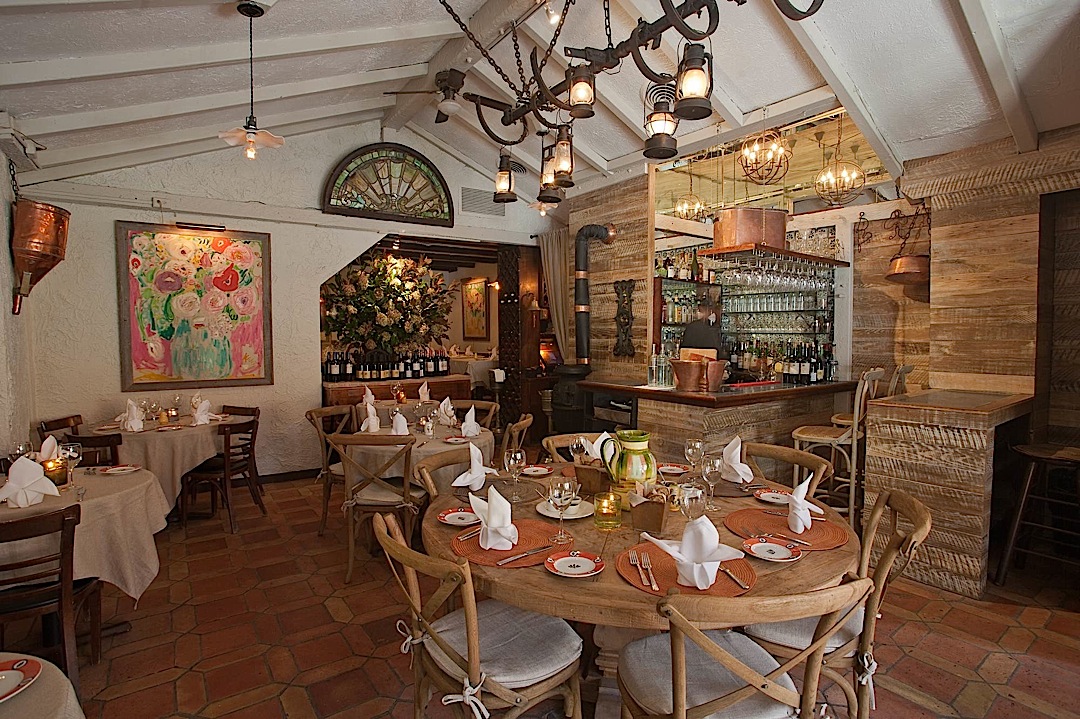
1008 Second Avenue (near 53rd Street)
212-759-7086
www.lamangeoire.com
Now
in its fourth decade, La Mangeoire still sits
comfortably on the upper east side, serving the
classic bistro food that its very faithful regulars
never tire of; indeed, they crave it week after week
and, if anything like me, dream of the roast chicken,
the onion soup, and the gratin of macaroni. I have an
old restaurant guide from the 1970s that show its
mustachioed chef-owner, Francois Ysambart, pouring
cognac into a sauté pan, at a time when the
price range for a three-course dinner was $11-$16.
Well, some things have obviously
changed, yet the prices at the 2011 version of La
Mangeoire are extremely moderate, with a fixed price
dinner at $29.50 and main courses à la carte
may be had in "smaller portions" or "larger portions,"
so that the Normandy mussels and crème
fraîche dish mouclade
will cost either $14.50 $19.50, the coq au vin
"24.50 or $33, and the roast salmon in a horseradish
broth $22.50 or $30, an affable kind of "Mama
Bear/Papa Bear" menu.
In the 1990s Gerard Donato bought
the bistro and about eighteen months ago brought in
master chef Christian Delouvrier to make everything
that was old and good now new and wonderful without in
any way compromising the style of cooking. It
would take me paragraphs to list all of Gascony-born Delouvrier's
achievments at great restaurants like Alain Senderens'
L'Archestrate in Paris and Maurice in NYC, Les
Célebrités 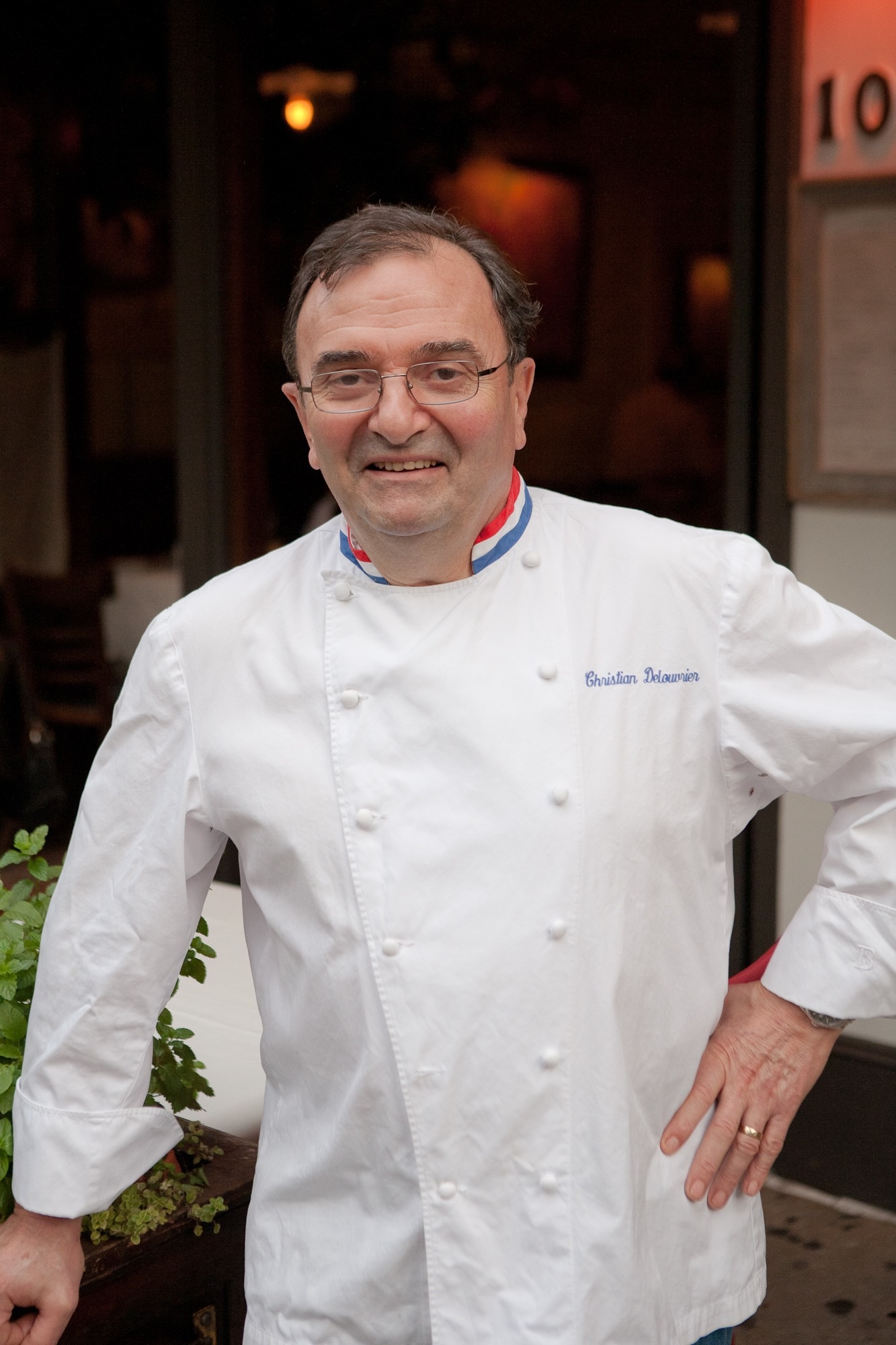 and Lespinasse in NYC, and
with Alain Ducasse at the Essex House as Executive
Chef. Of his coming to La Mangeoire, Delouvrier
says, "Here
I
found a home. This unpretentious but charming French
bistro with its loyal clientele has been the perfect
place for me. Gerard has been the perfect partner.
They have welcomed my reconversion and enabled me to
express myself in both traditional dishes and new
creations that stress flavor over style."
and Lespinasse in NYC, and
with Alain Ducasse at the Essex House as Executive
Chef. Of his coming to La Mangeoire, Delouvrier
says, "Here
I
found a home. This unpretentious but charming French
bistro with its loyal clientele has been the perfect
place for me. Gerard has been the perfect partner.
They have welcomed my reconversion and enabled me to
express myself in both traditional dishes and new
creations that stress flavor over style."
As usual with reconversions,
Delouvrier's commitment was total and he looked at
every dish on the bistro menu, refined them all and
added his own. Each month he celebrates a
different region of France, which currently is a lusty
Norman la potée au
chou, a hearty soup that features pork shank, slab bacon, Morteau
sausage, Savoy cabbage, carrots, potatoes, and
leeks.
The décor has been
completely re-done yet retains all the charms that
have made La Mangeoire (the "manger") such a cozy
delight by sprucing up the antique tile
floors and the wood-beamed ceilings. There are two
rooms, both glowing with warmth, the walls hung with
Provençal paintings, along with a
collection of copper pots and pans. Donato's use of
tablecloths here show the sham of other restaurateurs
I would guarantee that you could
close your eyes and put your finger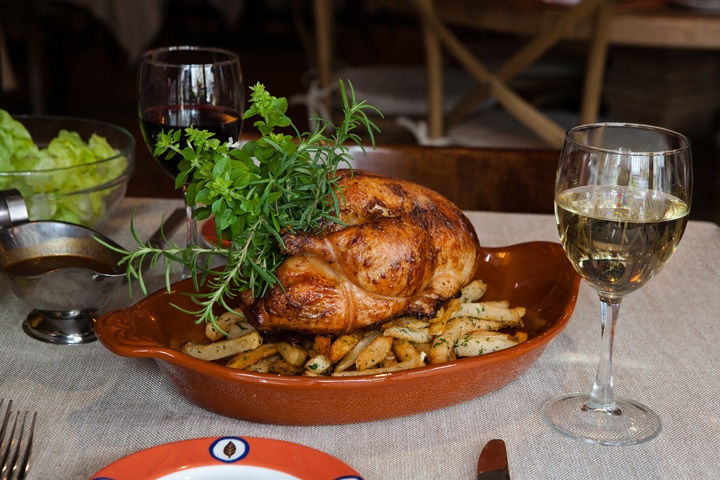 on any dish
on the menu and feel rewarded. Everything I tasted
had the honest taste of bourgeois cooking as done by
a master chef, the little details that add flavor
and texture, like the crispiest of skin on his roast
chicken stuffed with herbs and served in a big
platter with equally crisp pommes frites. That old favorite
soupe à
l'oignon appears bubbling and fragrant with
the sweet smell of caramelized onions, and it is so
thick and rich, you can literally spoon it from the
bowl onto a flat plate and eat it like a stew.
on any dish
on the menu and feel rewarded. Everything I tasted
had the honest taste of bourgeois cooking as done by
a master chef, the little details that add flavor
and texture, like the crispiest of skin on his roast
chicken stuffed with herbs and served in a big
platter with equally crisp pommes frites. That old favorite
soupe à
l'oignon appears bubbling and fragrant with
the sweet smell of caramelized onions, and it is so
thick and rich, you can literally spoon it from the
bowl onto a flat plate and eat it like a stew.
Delouvrier is rightly proud of
his calamari cooked on the griddle, with tomato,
basil and pine nut puree, this last a lovely touch
of texture and nuttiness. His foie gras is
excellent, the toasted bread that comes with it as
well, and crispiness is carried over to the roast
Atlantic salmon in that horseradish broth that gives
it a little kick, with a sweet Jerusalem artickoke
puree and braised leeks.
One of his signature items at La
Mangeoire is a duo
de plat de côte façon bourguignonne
et de bavette de boeuf, gratin de macaroni--a
big French way of saying braised short ribs and
skirt steak with glazed carrots and macaroni
gratin-- a triumph of hearty French cuisine.
Desserts stay very simple--
crème caramel or chocolate mousse.
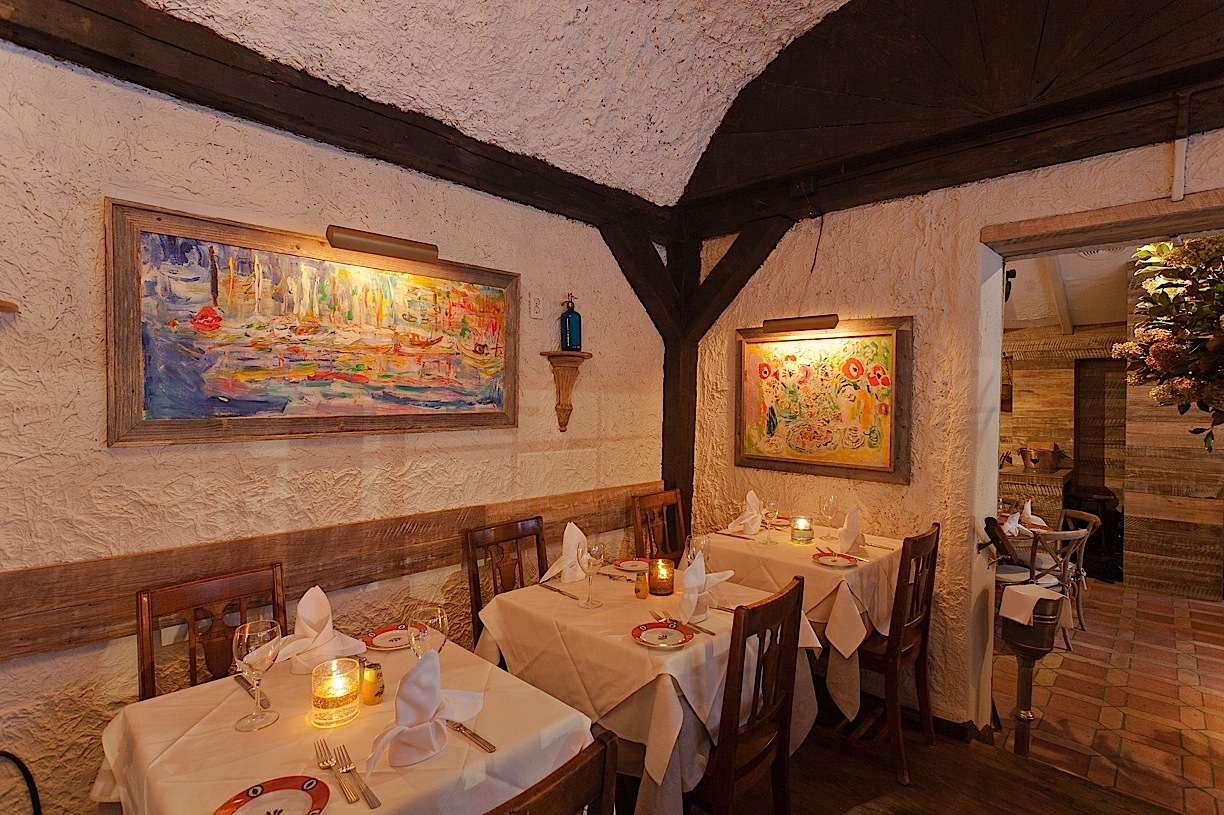 The winelist is
solid for a bistro of this size, but let Mr. Donato
guide you to some bottles he's just discovered he
thinks will be perfect for your meal. They won't
cost you very much.
The winelist is
solid for a bistro of this size, but let Mr. Donato
guide you to some bottles he's just discovered he
thinks will be perfect for your meal. They won't
cost you very much.
La Mangeoire is certainly not
alone among first-rate French bistros in NYC, and a
few have even been around as long as La Mangeoire,
like Chez Napoleon, Demarchelier, and Le Veau d'Or;
other newer ones hold strongly to the traditions of
the genre, like Benoit, Felix, Odéon, and
Quatorze Bis. But none does it with all the
panache and bonhomie of La Mangeoire, which is
perhaps best explained by Delouvrier himself when
speaking of the true glory of French cooking: "
La Mangeoire is open
Monday – Friday for lunch and dinner, 12:00pm –
11:00pm, for dinner only on Saturday from 5:30pm –
11:00pm, and for brunch and dinner on Sunday from
11:00am – 10:00pm.

MAN ABOUT TOWN
by Christopher Mariani
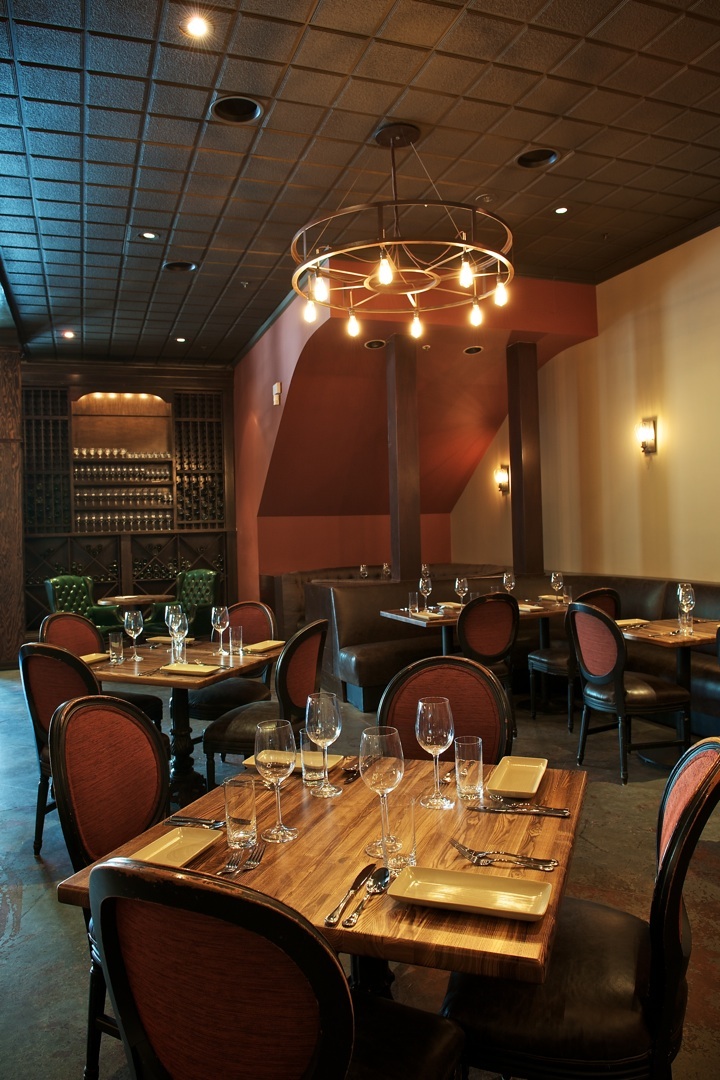 TXOKO
TXOKO
504 Broadway, San Francisco
514-500-2744
www.TxokoSF.com
While visiting San Francisco last month I
kept hearing all this hype about some restaurant
everyone was raving about yet
nobody knew how to pronounce. The restaurant with the
uncertain identity and
pronunciation is called Txoko (sounds like “choco”).
Txoko
opened in May and is located in North Beach, on the
corner of Broadway and
Kearny, a section of the city explained to me by my
cab driver as “a good
time.” Lots of bars, lots of nightlife, and one
or two
gentlemen’s clubs. An area of
SF known to be a bit racy.
Txoko’s
owner Ryan Maxey, who flaunts a brownish, red-beard
can be found roaming the
dining room. He is enthusiastic about his craft and
has an impressive knowledge
of wine, although his wine list is unusually small.
Chef/co-owner Ian Begg and
Maxey have worked together for years now, setting the
bar high at Café
Majestic, bringing home a Best New Restaurant of The
Year award from Esquire
magazine, opening their first
casual lunch spot, Naked Lunch, and their most recent
endeavor, Txoko, a Basque-style
restaurant serving items found at pintxos
(tapas) bars throughout San Sebastian.
The
restaurant is a good size, seating upwards of a 160
guests. The entrance opens
directly into the dining room. To the right, a hip bar
serving terrific Iberian
wines and well-made cocktails, and to the left, a
modestly decorated dining
room.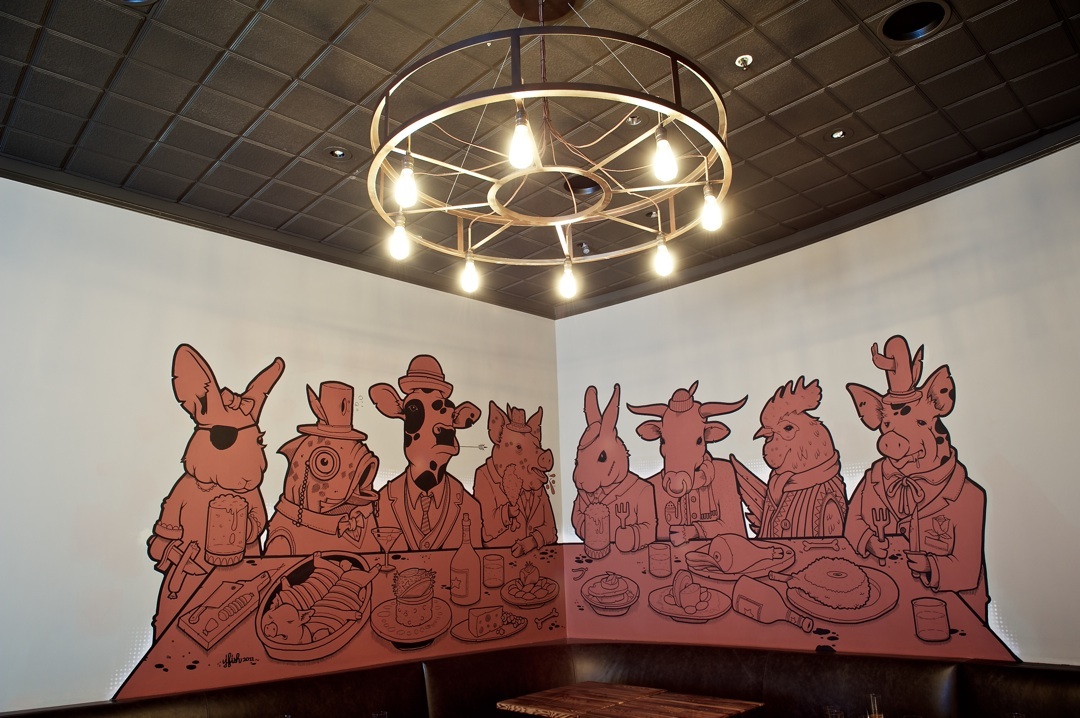 The walls are
colored adobe and cream, the ceiling is dark brown and
there is a mural of eight elegantly dressed animals,
some wearing top hats,
sitting down for a meal of swine and wine. Of course,
one of the two pigs
attending the party is holding a fried chicken leg.
The tables are wooden, some
bordered with banquettes, others by dark wood chairs.
Over all, the room could
use a bit of bolstering, maybe a brighter color or one
or two more murals.
The walls are
colored adobe and cream, the ceiling is dark brown and
there is a mural of eight elegantly dressed animals,
some wearing top hats,
sitting down for a meal of swine and wine. Of course,
one of the two pigs
attending the party is holding a fried chicken leg.
The tables are wooden, some
bordered with banquettes, others by dark wood chairs.
Over all, the room could
use a bit of bolstering, maybe a brighter color or one
or two more murals.
The
food
and wine selection are where Txoko excels far above
its casual atmosphere
and trendy persona. Begg has not only captured the
true flavor of the Basque
Country but he has taken commonly known pintxos
dishes and made them his own. Pintxos as a whole are
really good finger food,
and throughout most of northern Spain you will find
restaurant after restaurant
with similar pintxos
menus. Most preparations
are without a hint of garlic or heat, two ingredients
I know would make a world
of difference to Spanish cuisine.
Begg’s dishes
are far more creative in flavor and design than those
found at native Spanish pintxos bars.
The food is attractive,
with flavors that are dynamic, and may have easily
been the best food I tasted
during my recent visit to the Bay Area.
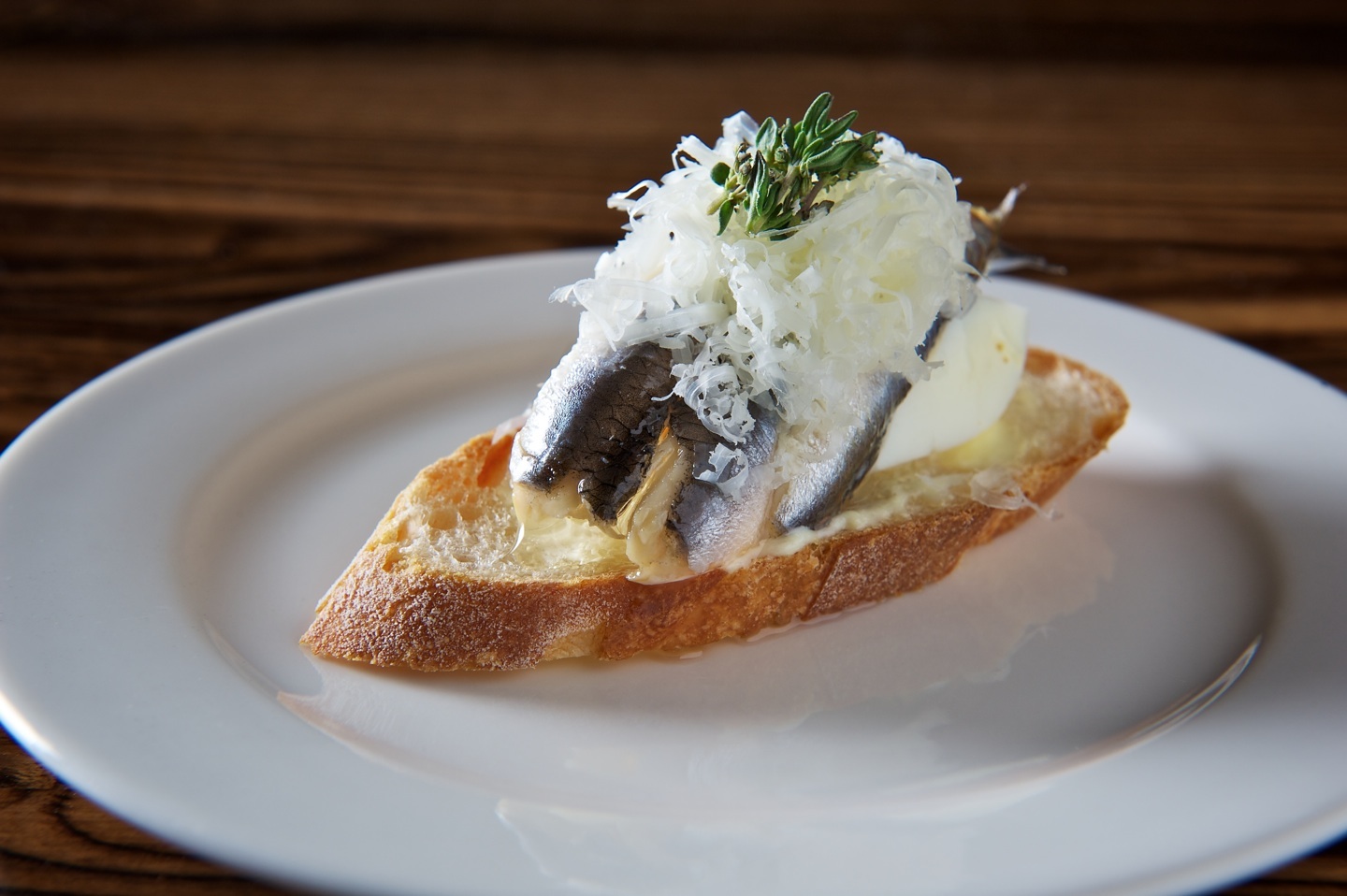 Do
not miss the braised pork belly served with chickpeas,
gypsy peppers, sishitos
and a sweet onion puree. The
empanadas are irresistible, filled with wild
mushrooms, Vidalia onions and
touch of rosemary. There is a rich foie gras a la plancha sided by sweet, glazed peaches.
Gorgeous boquerones
(anchovies) come finished with
olive oil, a dish I could have ordered three more of
and still not have had
enough, absolutely delicious. If you are up to it, try
the bone-in rib eye
steak for two, a steal at only $65. The meat is
well-fatted, full of flavor and
is probably enough for three, post-pintxos.
Do
not miss the braised pork belly served with chickpeas,
gypsy peppers, sishitos
and a sweet onion puree. The
empanadas are irresistible, filled with wild
mushrooms, Vidalia onions and
touch of rosemary. There is a rich foie gras a la plancha sided by sweet, glazed peaches.
Gorgeous boquerones
(anchovies) come finished with
olive oil, a dish I could have ordered three more of
and still not have had
enough, absolutely delicious. If you are up to it, try
the bone-in rib eye
steak for two, a steal at only $65. The meat is
well-fatted, full of flavor and
is probably enough for three, post-pintxos.
There
is
a nice selection of cheeses if desired. If you’d
rather have something
sweet, try the goat’s cheese flan or the gâteau
basque, with house made strawberry jam and a
yogurt sorbet. There is also a
foie gras ice cream served with roasted figs and a
sherry jelly. I have to
admit, I was a bit skeptical about ice cream, but
after trying it, I must say
it was not all that bad. Still not my first choice for
dessert.
It
is clear that Ryan Maxey and Ian Begg work well
together, actually they work
great together. I wouldn’t be surprised if this is not
the last concept these
two come up with for the city of San Francisco.
To
contact Christopher Mariani send an email to
christopher@johnmariani.com
Trappist
Monks, Barleyed Blondes, and Buffalo Bill
Add Spice to Belgian Beers
by John Mariani
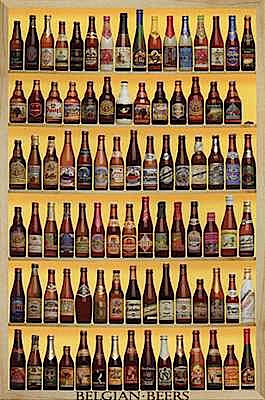 Having once moaned about France, “How
can you govern a country which has 246 varieties of
cheeses?”, Charles DeGaulle might have had a nervous
breakdown governing Belgium, which is smaller than
Maine but has well over 1,000 different beers. A
book on the subject, All Belgian Beers
by Hilde Deweer is 1,568 pages long and weighs 3.4
pounds.
Having once moaned about France, “How
can you govern a country which has 246 varieties of
cheeses?”, Charles DeGaulle might have had a nervous
breakdown governing Belgium, which is smaller than
Maine but has well over 1,000 different beers. A
book on the subject, All Belgian Beers
by Hilde Deweer is 1,568 pages long and weighs 3.4
pounds.
Try as I would to make a dent in Belgian beers
while on a trip to Antwerp, Ghent and Brussels last
month, I came away only flabbergasted at the variety
and styles of the brews there, each with its own
signature glass, which includes amber, blonde, brown,
champagne, sour, and strong ales, lambic and fruit
beers, pale lagers, stout, white wheat beer, and
winter beers, among others.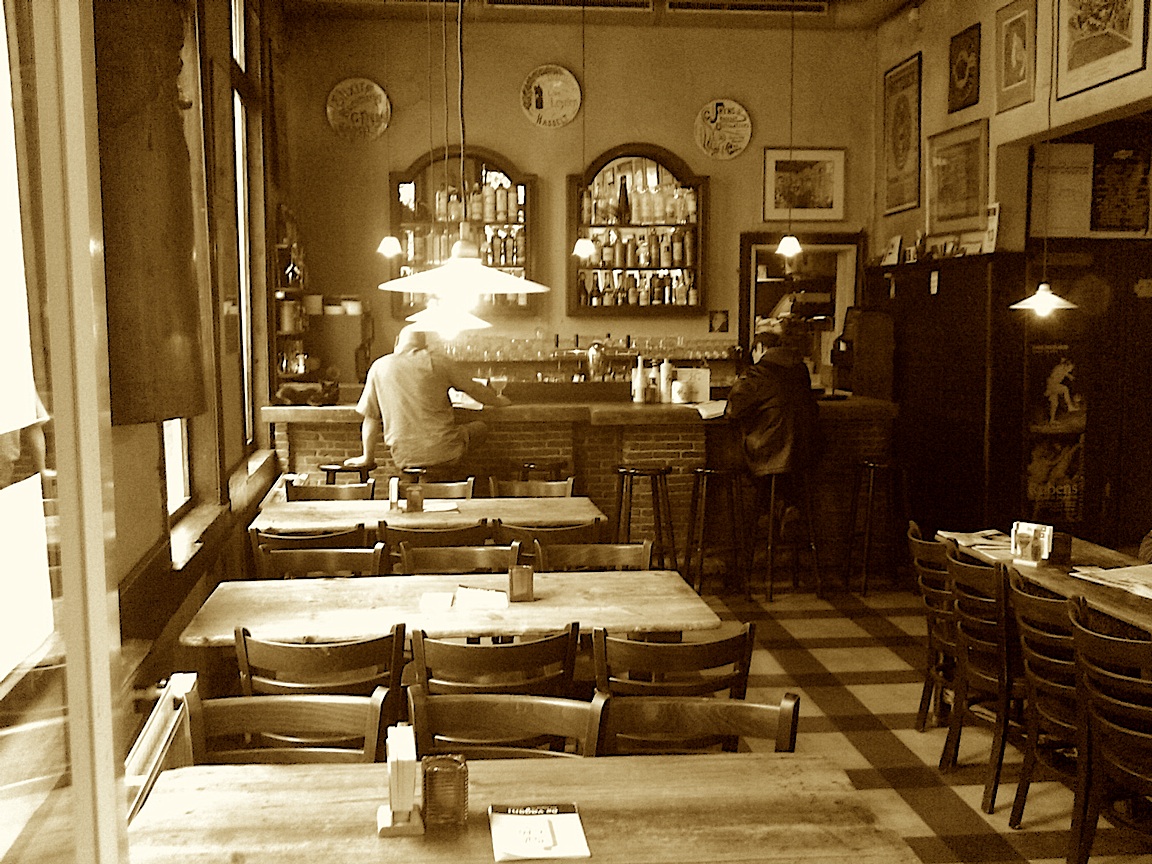
For a crash course, I headed to
Antwerp’s De
Groote Witte Arend (the great white eagle), set
in a raftered, brick building dating to 1488, once a
convent, since 1976 a beer hall/restaurant with a menu
of 280 brews. With hearty dishes like beef stew,
mussels in a curry sauce, and eel baked in cream, I
sampled beers that ranged from a mere 4.6 percent
alcohol up to a whopping 9.2.
What I found overall in Belgian beers was the
enormous difference between them and most American
beers, which are overwhelmingly bland lagers. At De
Groot Witte Arend, I drank a Buffalo Bitter ale on
draft, named after Buffalo Bill, whose circus once
played in town and distracted a young beer maker
enough to have him neglect stirring the beer,
resulting in a very bitter brew, which this definitely
is, with 9 percent alcohol.
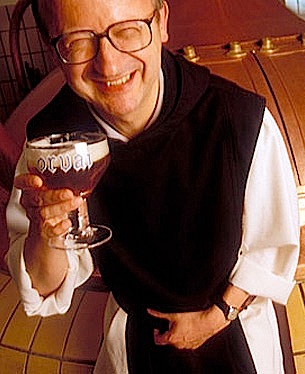 I
tasted a couple of monastery-made beers, that included
Trappist Rochefort (9.2˚), wonderfully wheaty and
delicious with Belgian food. Hopus, made by Brasserie
Lefebvre (which makes 24 other beers), was sudsy and
luscious, bittersweet, dark and syrupy. But the most
impressive beer of the evening—which in 2008 won
“World’s Best Ale” at the World Beer Awards--was
Tripel Karmeliet, an earthy, very rich, piney-sweet.
Its maker, Bosteels, has been in the business for
seven generations, since 1791. Orval (left) is another
Trappist monastery beer, dating back to the middle of
the 17th century.
I
tasted a couple of monastery-made beers, that included
Trappist Rochefort (9.2˚), wonderfully wheaty and
delicious with Belgian food. Hopus, made by Brasserie
Lefebvre (which makes 24 other beers), was sudsy and
luscious, bittersweet, dark and syrupy. But the most
impressive beer of the evening—which in 2008 won
“World’s Best Ale” at the World Beer Awards--was
Tripel Karmeliet, an earthy, very rich, piney-sweet.
Its maker, Bosteels, has been in the business for
seven generations, since 1791. Orval (left) is another
Trappist monastery beer, dating back to the middle of
the 17th century.
In the beautiful and serene city of Ghent, I
visited Gruut
Gentse Stadsbrouwerji on the river (open to the
public, with a café inside), owned by an
attractive young brewer named Annick De Splenter (below), who
uniquely uses spices (gruit) rather than hops to make her
five unfiltered, unpasteurized, slightly cloudy beers. You can
taste the faint flavors of spices like coriander and
orange peel in her wheat beer, while her semi-sweet
amber Old English Pale Ale is a gorgeous caramel
color, with lots of rich complexity, a beer with 6.6˚
alcohol to be enjoyed all on its own, not slugged back
at a pub. Her
brown ale has a lovely, spicy aroma and citrusy flavor
with a long, nutty finish, while her Blonde (5.5˚) is
gently barleyed. It is similar to a good U.S. lager
but has considerably more body.
Just as an experiment, De
Splenter made a beer with hops, called Inferno, which
shows how hops add the bitterness characteristic of
most beers, but it lacked any other interesting
flavors.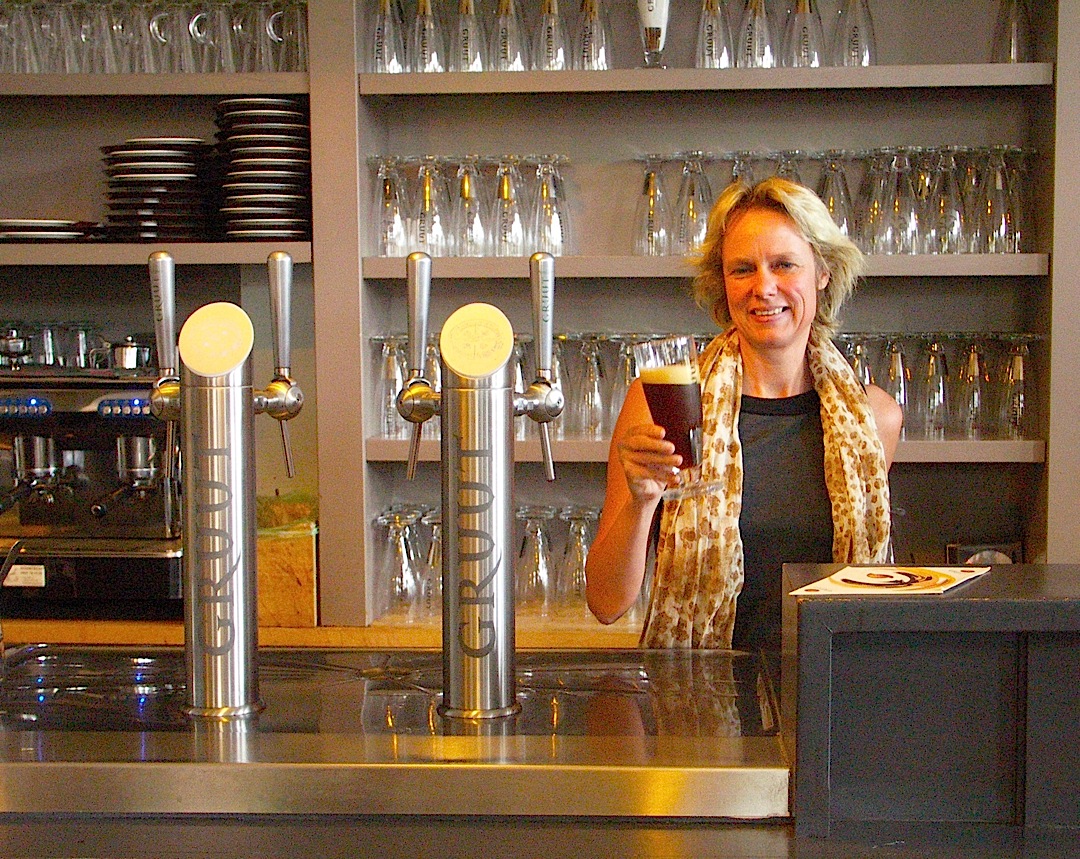
Brussels teems with pubs and beer brasseries,
including one called Delirium Café—on the
appropriately named Impasse de la Fidelite--that lists
more than 2,000 beers from all over the globe, every
one described in text, including the Belgian Pink
Killer, made from grapefruit.
No beer aficionado visiting Belgium can afford
to miss the city’s Museum
of the Geuze, run by the Van Roy-Cantillon
family since 1900, where the living microorganisms in
the air cause the spontaneous fermentation of the
traditional so-called Geuze lambic process, which
begins with raw wheat, malted barley, and dried,
three-year-old hops (below). The beer is
pumped into chestnut barrels, where the fermentation
begins, during which carbon dioxide seeps out through
the wood; thus, the beer is not oversaturated with the
gas. The company claims its Greuze can age and improve
for more than 20 years.
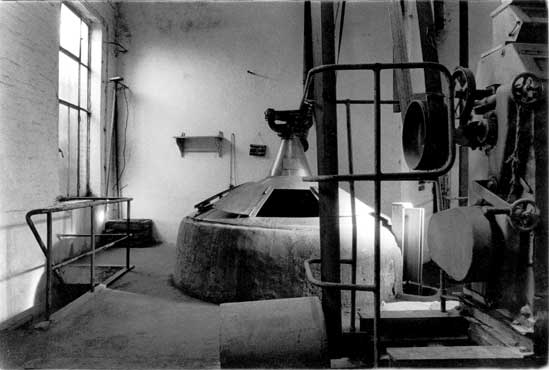 This
range of beer styles impressed me not only in their
numbers but in the many ways they can be enjoyed, as a
thirst quencher, as an accompaniment to individual
food—not least cheeses, with which slightly sweet
beers go very well—or as an after-dinner drink.
This
range of beer styles impressed me not only in their
numbers but in the many ways they can be enjoyed, as a
thirst quencher, as an accompaniment to individual
food—not least cheeses, with which slightly sweet
beers go very well—or as an after-dinner drink.
Great
Britain,
Germany, and America’s craft breweries all make fine,
interesting beers, but given the number of them made
in Belgium, I’ve been converted to ferreting them out
whenever I can find them. As one Belgian friend told
me, “For Belgians beer is neither a religion nor an
indulgence. It’s just good food.”
John Mariani's column appears in Bloomberg Muse News, from which this story was adapted. Bloomberg News covers Culture from art, books, and theater to wine, travel, and food on a daily basis.
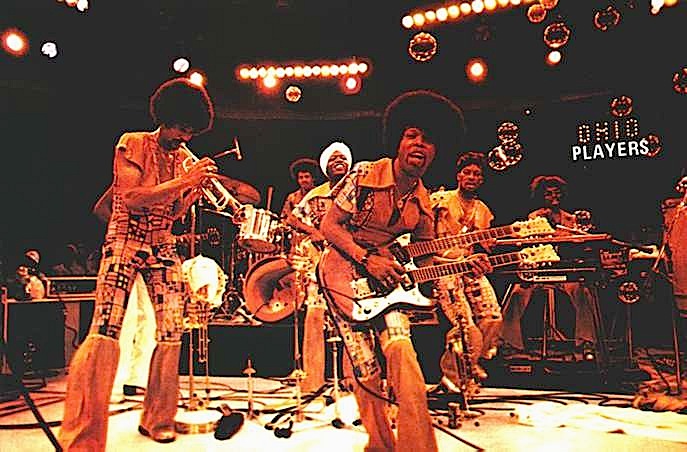 ARTICLES WE
ARTICLES WE
NEVER FINISHED READING
“Close to
midnight one Saturday night in Sebastopol, in Sonoma
County, California, fog rolled in from the nearby
Pacific Ocean, encompassing the town in thick, cool
mist. Inside
an old apple cannery, though, revelers were in a
different sort of haze—one produced by the cacophonous
sounds of a funk band.”—Emily Brady, “Food and Art in
Sonoma’s Other Town,” NY Times
(10/23/11).
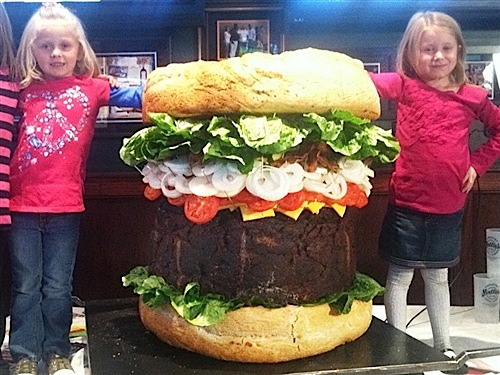
The
Detroit News reported that Mallie's Sports
Grill & Bar made
a 338-pound "Absolutely Ridiculous Burger" containing
15 pounds
of lettuce, 30 pounds of bacon, 30 pounds of tomatoes
and
36 pounds of cheese (540,000 calories), and took 22
hours
to cook. With fries and a drink the price is $2,000.
Any of John Mariani's
books below may be ordered from amazon.com.
 |
My latest book, written with Jim Heimann and Steven Heller, Menu Design in America, 1850-1985 (Taschen Books), has just appeared, with nearly 1,000 beautiful, historic, hilarious, sometimes shocking menus dating back to before the Civil War and going through the Gilded Age, the Jazz Age, the Depression, the nightclub era of the 1930s and 1940s, the Space Age era, and the age when menus were a form of advertising in innovative explosions of color and modern design. The book is a chronicle of changing tastes and mores and says as much about America as about its food and drink.
“Luxuriating vicariously in the pleasures of this book. . . you can’t help but become hungry. . .for the food of course, but also for something more: the bygone days of our country’s splendidly rich and complex past. Epicureans of both good food and artful design will do well to make it their cofee table’s main course.”—Chip Kidd, Wall Street Journal.
“[The menus] reflect the amazing craftsmanship that many restaurants applied to their bills of fare, and suggest that today’s restaurateurs could learn a lot from their predecessors.”—Rebecca Marx, The Village Voice.
|
"Eating Italian will never be the same after reading John Mariani's entertaining and savory gastronomical history of the cuisine of Italy and how it won over appetites worldwide. . . . This book is such a tasteful narrative that it will literally make you hungry for Italian food and arouse your appetite for gastronomical history."--Don Oldenburg, USA Today. "Italian
restaurants--some good, some glitzy--far
outnumber their French rivals. Many of
these establishments are zestfully described
in How Italian Food Conquered the World, an
entertaining and fact-filled chronicle by
food-and-wine correspondent John F.
Mariani."--Aram Bakshian Jr., Wall Street
Journal.
"Equal parts
history, sociology, gastronomy, and just
plain fun, How Italian Food Conquered the
World tells the captivating and delicious
story of the (let's face it) everybody's
favorite cuisine with clarity, verve and
more than one surprise."--Colman Andrews,
editorial director of The Daily
Meal.com. "A fantastic and fascinating
read, covering everything from the influence
of Venice's spice trade to the impact of
Italian immigrants in America and the
evolution of alta cucina. This book will
serve as a terrific resource to anyone
interested in the real story of Italian
food."--Mary Ann Esposito, host of PBS-TV's
Ciao
Italia. "John Mariani has written the
definitive history of how Italians won their
way into our hearts, minds, and
stomachs. It's a story of pleasure over
pomp and taste over technique."--Danny Meyer,
owner of NYC restaurants Union Square Cafe,
Gotham Bar & Grill, The Modern, and
Maialino.
|
 |
 |
 |
 |
 |
 |
 |
 |
 Everett Potter's Travel Report:
Everett Potter's Travel Report: 
 Eating Las Vegas
is the new on-line site for Virtual Gourmet
contributor John A. Curtas., who since 1995
has been commenting on the Las Vegas food
scene and reviewing restaurants for Nevada
Public Radio. He is also the
restaurant critic for KLAS TV, Channel 8 in
Las Vegas, and his past reviews can be
accessed at KNPR.org.
Click on the logo below to go directly to
his site.
Eating Las Vegas
is the new on-line site for Virtual Gourmet
contributor John A. Curtas., who since 1995
has been commenting on the Las Vegas food
scene and reviewing restaurants for Nevada
Public Radio. He is also the
restaurant critic for KLAS TV, Channel 8 in
Las Vegas, and his past reviews can be
accessed at KNPR.org.
Click on the logo below to go directly to
his site.

Tennis Resorts Online: A Critical Guide to the World's Best Tennis Resorts and Tennis Camps, published by ROGER COX, who has spent more than two decades writing about tennis travel, including a 17-year stretch for Tennis magazine. He has also written for Arthur Frommer's Budget Travel, New York Magazine, Travel & Leisure, Esquire, Money, USTA Magazine, Men's Journal, and The Robb Report. He has authored two books-The World's Best Tennis Vacations (Stephen Greene Press/Viking Penguin, 1990) and The Best Places to Stay in the Rockies (Houghton Mifflin, 1992 & 1994), and the Melbourne (Australia) chapter to the Wall Street Journal Business Guide to Cities of the Pacific Rim (Fodor's Travel Guides, 1991).


The Family Travel Forum - A
community for those who "Have Kids, Still Travel" and
want to make family vacations more fun, less work and
better value. FTF's travel and parenting features,
including reviews of tropical and ski resorts, reunion
destinations, attractions, holiday weekends, family
festivals, cruises, and all kinds of vacation ideas
should be the first port of call for family vacation
planners. http://www.familytravelforum.com/index.html
ALL YOU NEED BEFORE YOU GO


MARIANI'S VIRTUAL GOURMET
NEWSLETTER is published weekly. Editor/Publisher: John
Mariani.
Contributing Writers: Christopher Mariani, Robert Mariani,
John A. Curtas, Edward Brivio, Mort Hochstein,
Suzanne Wright, and Brian Freedman. Contributing
Photographers: Galina Stepanoff-Dargery, Bobby
Pirillo. Technical Advisor: Gerry McLoughlin.
To un-subscribe from this newsletter, click here.
© copyright John Mariani 2011
